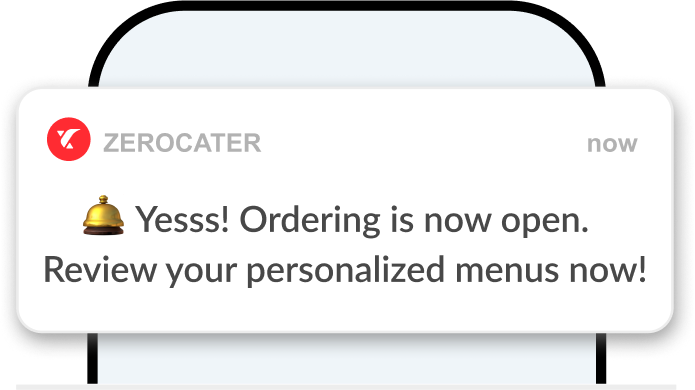Any sandwich—PB&J, BLT, grilled cheese, the list goes on—is an endlessly flexible foundation to build upon. However, whether you pack your own lunch, use corporate catering for office sandwiches, or plan a DIY breakfast sandwich bar, sandwiches can far exceed expectations of a boring filling between two slices of sad bread. With our tips below, you’ll be able to put together tasty and creative sandwiches—including vegan and gluten-free varieties—sure to make any belly happy.
What exactly is a sandwich?
Before we get into ways to jazz up a boring sandwich, it helps to understand what this lunch staple is. Believe it or not, the definition of a sandwich can be more complicated than you might think. It has even led to lawsuits. For the purposes of satisfying your sandwich cravings, let’s define a sandwich the same way New York State defines one.
“Sandwiches include cold and hot sandwiches of every kind that are prepared and ready to be eaten, whether made on bread, bagels, rolls, in pitas or wraps, or otherwise, and regardless of the filling or number of layers. A sandwich can be as simple as a buttered bagel or roll, or as elaborate as a six-foot, toasted submarine sandwich.”
When constructing your sandwich masterpiece, consider these four main components.
- Base
The bread, flatbread, or leaf (such as lettuce) that encases or contains the rest of the sandwich’s components. Essentially, the base is the wrapper you hold onto and first bite through. - Main ingredient(s)
Meat, cheese, veggies, legumes, seafood, etc.; this protein is the star of the sandwich show. - Secondary ingredient(s)
Similar to supporting actors, these items complement the main ingredient (such as veggies which add crunch to a soft meat). - Spread
From mayo to sriracha, spreads add moisture, texture, flavor, and complexity. They also help hold the rest of the sandwich together by binding fillings to the base.
In addition to what goes into your sandwich, consider how you want to prepare it. A cold or chilled sandwich often stays together easily and has a firmer texture overall. Grilling, toasting, or hot-pressing sandwiches elevates flavors and helps the bread get nice and crunchy, but doesn’t sit for a long time/gets cold easily.
Three common reasons your sandwich is boring
With hundreds of different combinations, sandwiches can be as complex as you want. Yet it can also be easy to whip up an uninspiring version.
A boring sandwich is usually a one-dimensional sandwich. Here are three common problems.
- Non-flavorful ingredients
- No crunch to contrast soft textures
- Lack of something sharp or acidic (fatty components, such as roast beef, mayo, peanut butter, can mute flavors)
Sandwiches don’t have to be this way though. Here are just a few ideas for how the simple sandwich transforms into something textured, flavorful, and amazing.
Build the base
Your sandwich’s base is the foundation, the roof, or, in the case of a wrap, the all-encompassing hug. A good base gives you something to grab onto and sink your teeth into. All the while, it should hold the sandwich together long enough to deliver the fillings to your mouth instead of dumping them on your lap or your computer.
Since wheat-based bread or flatbread is the most common base, this is also where you may need to pay special attention to gluten-free diets by making sure there are gluten-free ingredients and prep areas available.
There are no right or wrong options when it comes to the base. There’s only what matters to the sandwich as a whole. Sometimes, yes, you may want a thick, tart sourdough made from a 100-year-old starter. Other times, a standard supermarket white bread is perfect. Choose your base and assemble your sandwich your way, no shame.
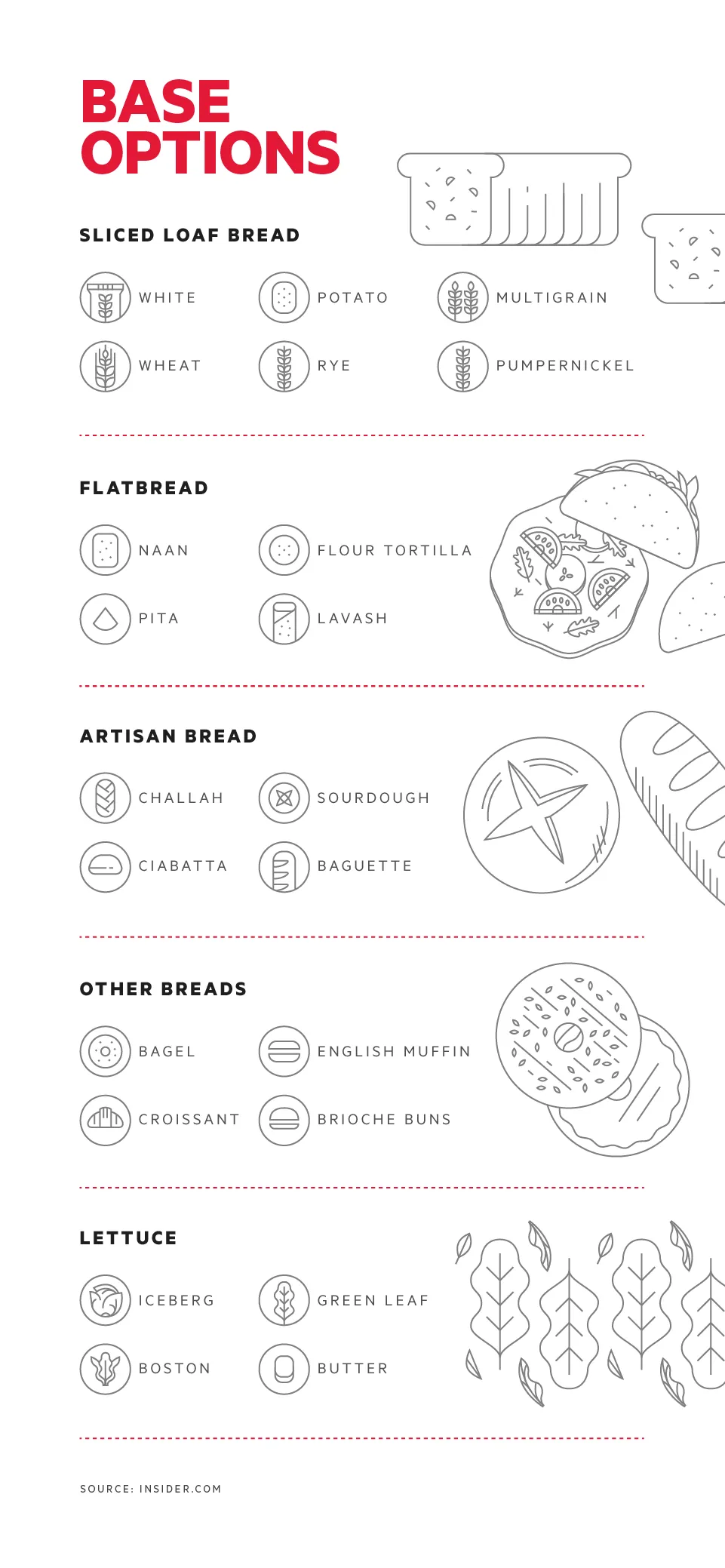
Choose your main ingredient
Whether your sandwich is hot or cold, enclosed or open-faced, the main ingredient is the primary filling that you base the rest of the sandwich around.
While meats—such as roast beef, ham, chicken, or turkey—often find themselves sandwiched between layers of bread, your main ingredient doesn’t have to be meat. You can also choose from vegetables, legumes, seafood, and dairy. If you’re vegetarian or vegan, you can leave the meat out altogether and still craft an amazing sandwich that wows your co-workers.
Picking the best main ingredient comes down to what flavors and textures will make you truly enjoy every bite. Do you want something salty? Heavy? Light? Savory? Creamy? Sweet? See what gets your mouth watering.
Like your base, your main ingredient helps you understand what you’ll build your sandwich around.
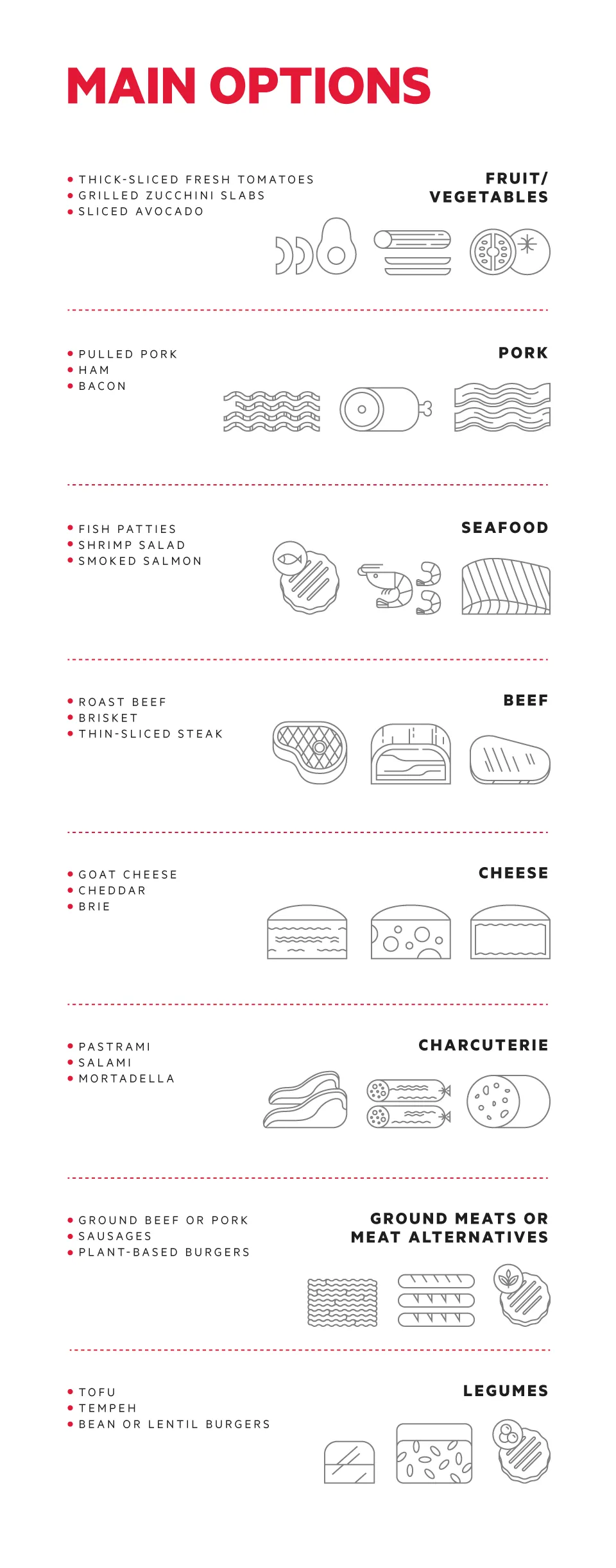
Complement and contrast with secondary ingredients
Secondary ingredients are your sandwich’s supporting actors. Their job? Enhance and contrast the base and the main ingredient. These can be anything from bright colors that contrast white or tan breads to the crunch of vegetables that sound as satisfying as they taste.
Here are three ways your secondary ingredients can make your sandwich even better.
- Contrast
Contrasting colors, shapes, sounds, flavors, and textures add complexity and flavor to your sandwich while bringing out the best of your base and main ingredient. - Size
A thin, skimpy sandwich is an unappetizing sandwich. Adding bulk and body to your sandwich gives you more to bite into and helps you feel fuller. - Nutrition
Secondary ingredients can help you bump up the protein, fiber, vitamin, mineral, and antioxidant content, helping your sandwich satisfy not only your appetite, but your daily nutrition needs, too.
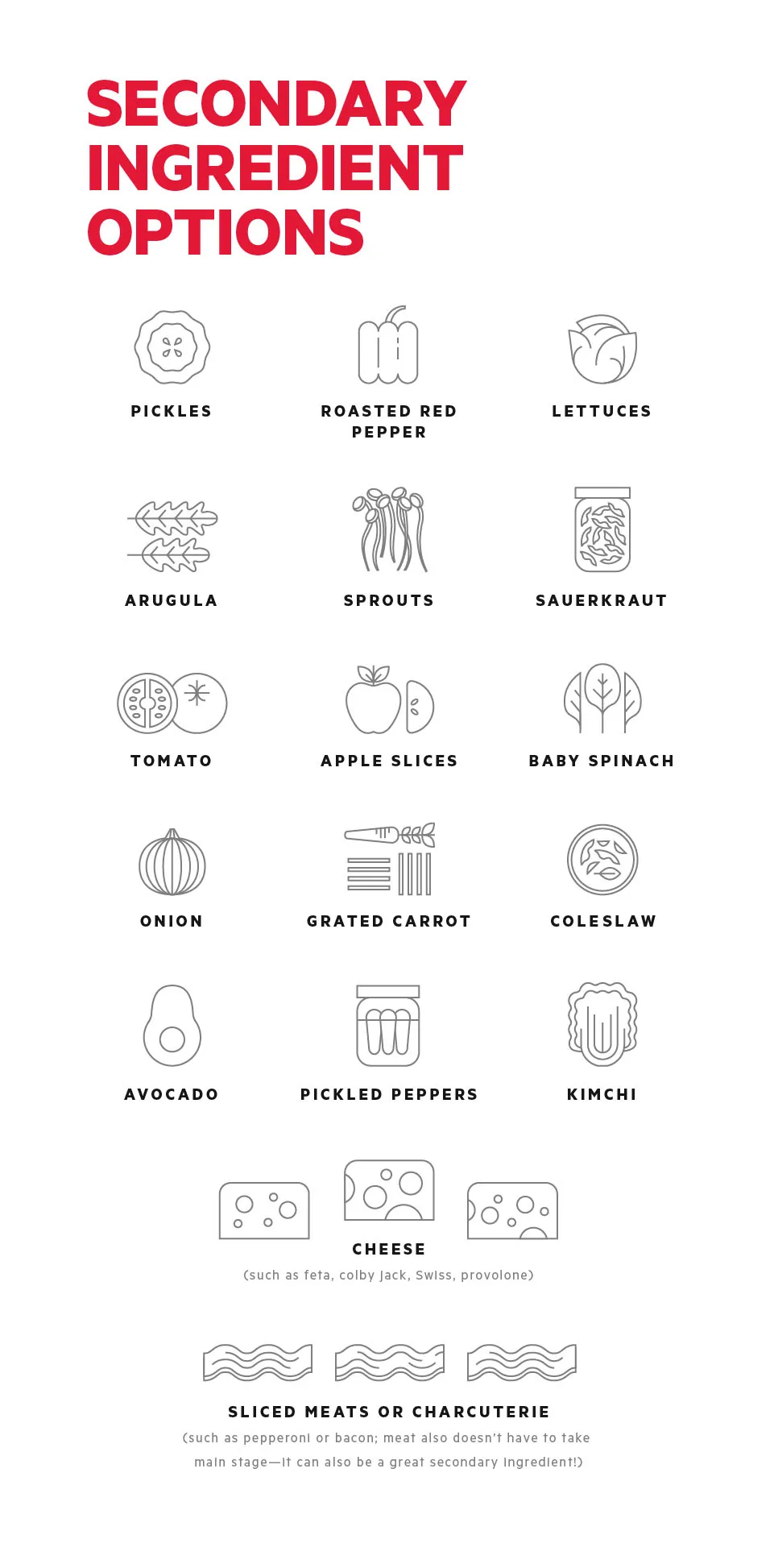
Spread the finale
A spread can be a minor character in your sandwich, or it can serve as a main ingredient (as in the case of peanut butter in a PB&J).
Spreads take many forms and contribute flavor, texture, color, and aroma that bring the sandwich together. They can be worked onto one slice of bread, both slices of bread, all over a tortilla, or even between layers of different ingredients. A thin layer can bring subtle flavor while a thicker layer adds volume and more flavor to your sandwich.
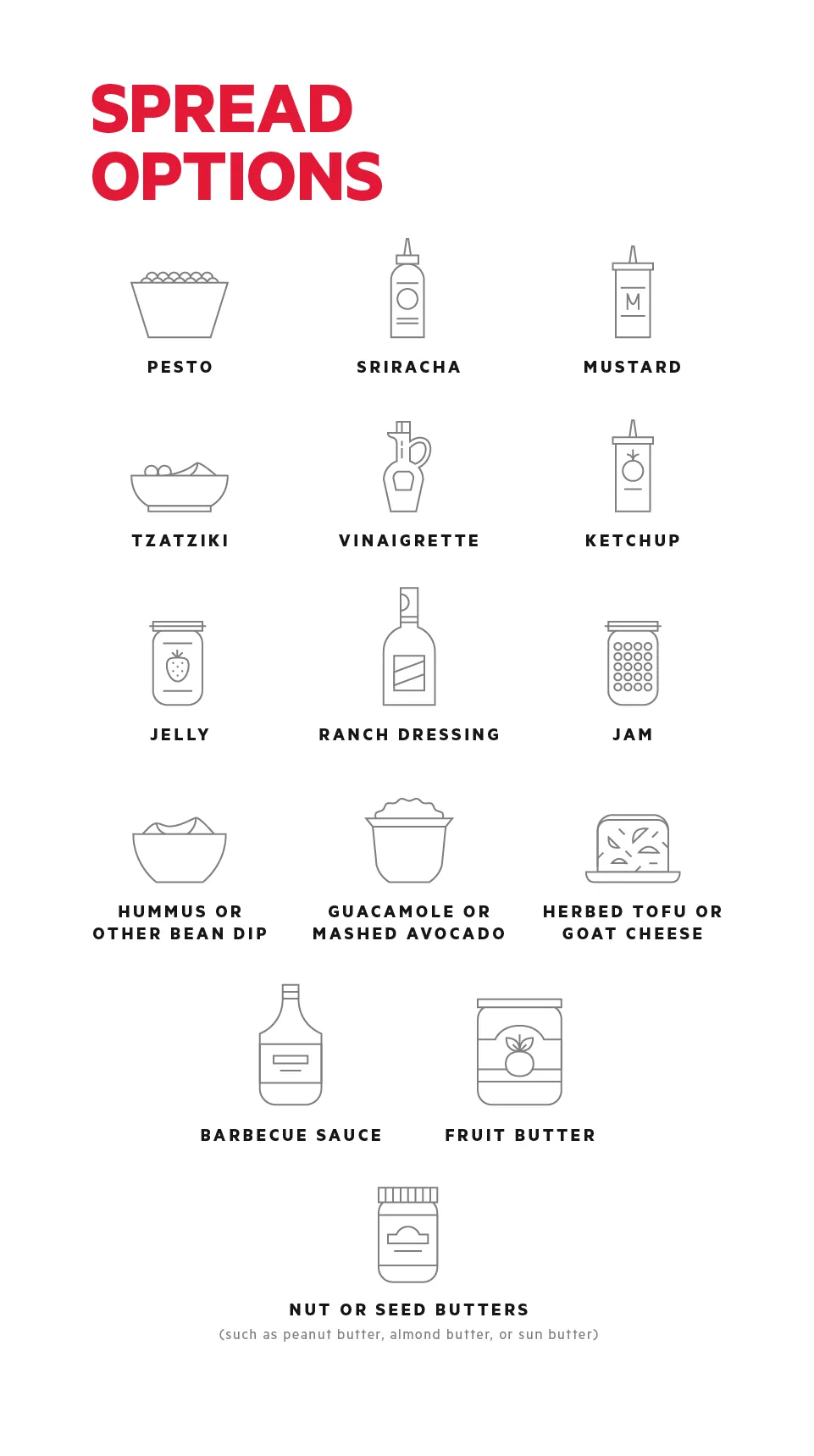
Want to order in?
If you’d like to step up your office food offerings or cater a workplace event, options abound for world-class caterers who can bring ready-to-eat sandwiches, subs, wraps, trays, and platters to your break room or conference room.
- Chicago, Illinois
- New York City Area, New York
The endlessly satisfying sandwich
No matter how you stack, wrap, open, press, heat, or cool it, the sandwich is virtually infinite in its possibilities to delight your appetite and satisfy your hunger.
With four simple components—the base, the main ingredient, the secondary ingredient, and the spread—you can transform your sandwich or your corporate catering meal into a deli delight that everyone at the office will look forward to biting into.
 to plan your catering
to plan your catering

